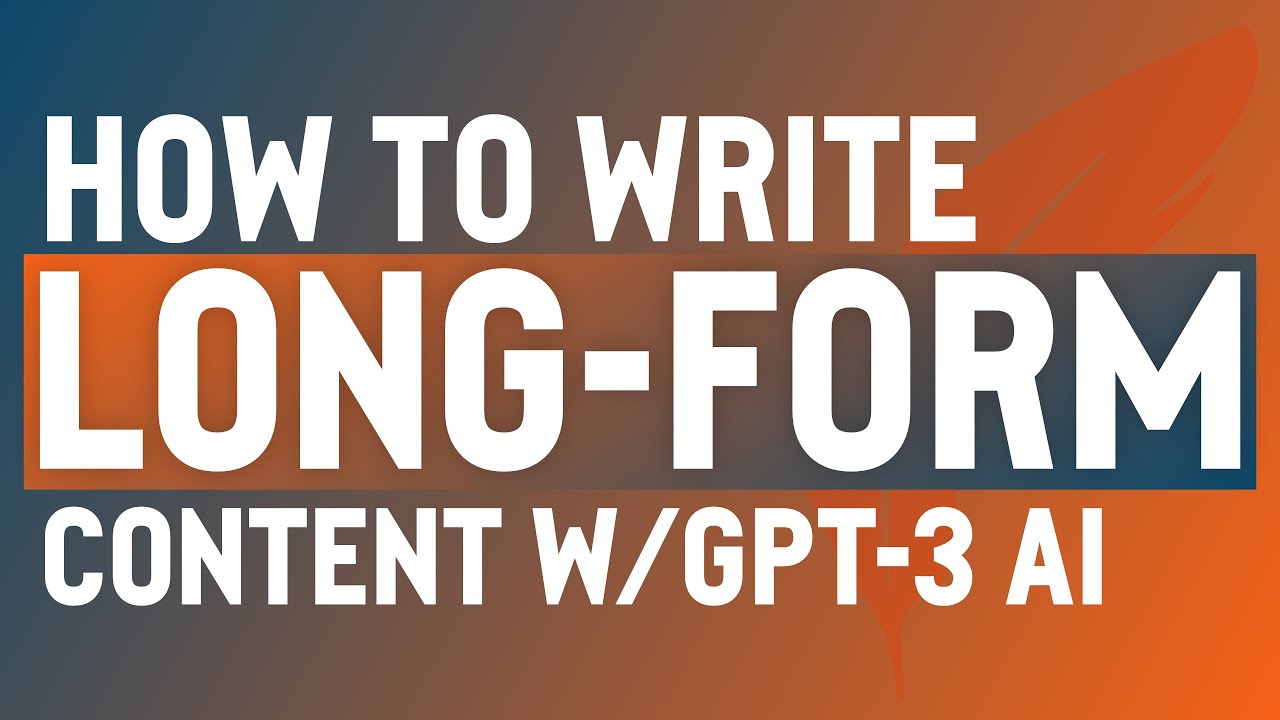AI Content Dojo
Show notes: https://aicontentdojo.com/how-to-write-long-form-content-using-gpt-3-ai-shortlyai/
Get ShortlyAI: https://shortlyai.com/?via=chad
===
Dear viewer: These video notes contain links to products and services that I may be compensated for, at no extra cost to you.
===
This guide is by popular demand. With all the excitement around the new “GPT-3” AI, it’s easy to jump right in and then find out articles aren’t just instantly auto-generated and there are some things to learn to get the most out of these tools. The best one, called ShortlyAI, simply keeps getting better and currently stands head and shoulders above the competition in terms of long-form content.
In this guide, I want to show you how to create long-form articles using ShortlyAI. It’s essentially a “dance” with your AI partner, but let me show you the moves — and to understand the dance you must first understand your partner.
What is GPT-3?
I don’t want to bore you with all the computer science-y terms, so here’s the easy way to understand it. GPT-3 is a unidirectional (one-way) predictive text algorithm with a very large language model (memory) to use. Meaning it’s really good at finishing sentences.
Keep the Narrative Thread Intact
You may have heard a common limitation for GPT-3 writing apps to “keep it together.” Meaning, it may write one thing at the beginning of a paragraph only to contradict itself a moment later. And that’s true, a problem for most GPT-3 based AI writing apps — but not necessarily for ShortlyAI.
If you write a little, let the AI write a little, and keep taking turns leading in the dance, you’ll automatically maintain the narrative thread (assuming you are trying to) and create an article that makes sense to read and flows well between thoughts. Be careful not to become too greedy and push the AI to write significantly more than you.
Understand Context to Write Sub-Sections
One of the most important things to understand, especially when trying to write long-form content, is context. Context is the words and phrases that get sent to GPT-3 so it can write the next content for you.
Check out this guide for a deeper explanation of context — but real quick, in ShortlyAI the article brief, title, and content above the current location of the cursor are sent to OpenAI’s servers as context when you tap that “write for me” button. There’s a little more voodoo going on behind the scenes, but what you need to know is how to control this context when writing in Shortly.
And that’s where Shortly’s /// command comes in — it’s called the “context cutoff ruler.” As you can imagine, it cuts off the context. But what does that mean?
If you recall, I mentioned the article brief, title and everything above the current location of the cursor is used. But when you start getting into a sub-section within your article that has it’s own set of content needs… then the rest of the article could get in the way a bit.
Meaning, the words and phrases in the content above the section you’re working on are being sent to the AI too and influencing the results. To solve that, simply add the /// above the sub-section you’re working on. That will prevent Shortly from using anything above it to request content from GPT-3.
Use /Commands to Empower Your Writing
These are specialized commands that give you extra capabilities when writing. There are “refine” commands: shorten, rewrite, and expand. And then there are “long-form” commands: brainstorm and outline.
The Refine Commands
With the refine commands you’ll be able to tweak and improve your sentences using AI assistance (I go into more detail on these commands here). They do exactly what they sound like: shorten, rewrite, and expand. Shorten will try to make a sentence more concise. Rewrite will try to change up the wording.
Expand is the real masterpiece here — in terms of writing long-form content quickly. Use expand to add more “meat” to your article. Maybe to explain a certain topic within the content of your article — or just to add something extra to existing text.
The Long-Form Commands
I go more in-depth on the long-form commands here. Suffice it to say, these two commands give you some real nice capabilities.
Brainstorm will help you think through your topic more thoroughly to come up with new content ideas, or just understand a wider scope to your topic.
Outline does exactly what it sounds like. It gives you some ideas of how you might outline your article — are even a sub-section within your article.
Summary
Just go with the flow. You write, the AI writes. Use context to your advantage and the /commands when you need more power. At first you may feel a bit awkward, but as you get better with leading the AI the results are fantastic.
You’ll find yourself working faster than ever and even adding angles to your writing you didn’t plan for — as the AI gives you unexpected, but good, content.
